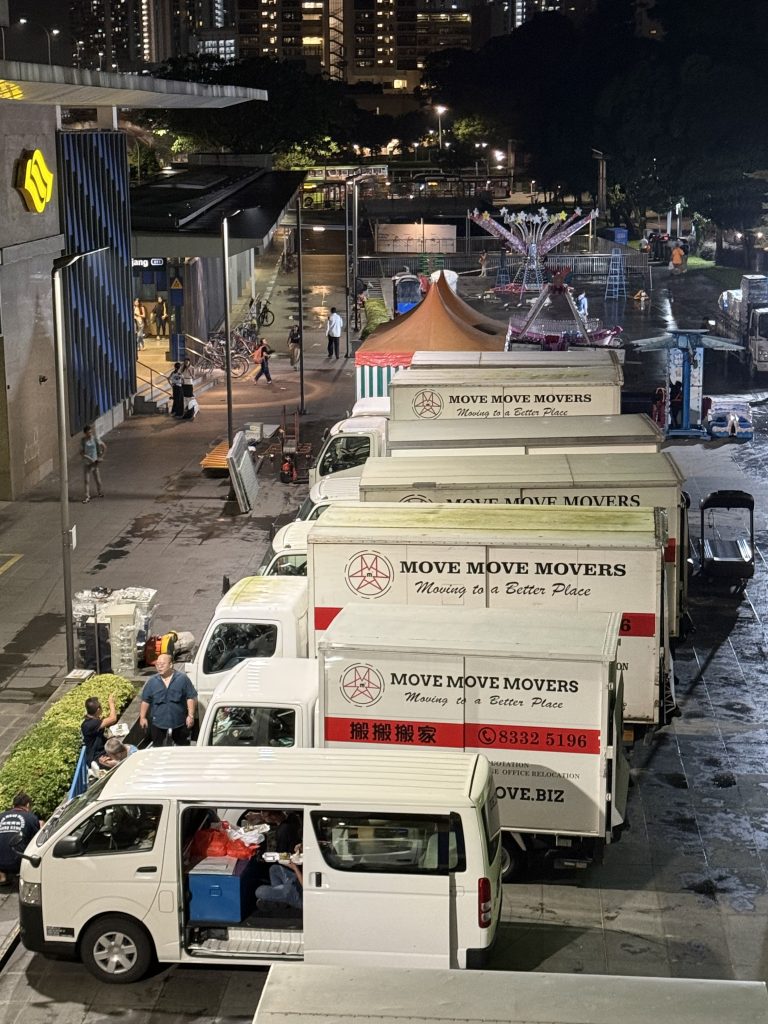
Tariffs in 2025: What They Mean for Singapore’s Moving Industry (Yes, Even Movers Have to Worry About the Economy)
Tariff changes in 2025 are set to impact Singapore’s moving industry, affecting logistics costs and service pricing.
As your friendly neighbourhood economist — one who secretly knows how to wrap a fridge and navigate a narrow HDB corridor — I’m here to give you the lowdown:
2025 global tariffs are coming, and yes, they will affect moving companies in Singapore.
Not just the big boys doing F1 events, but also your everyday movers helping Auntie Tan shift from Toa Payoh to Tampines.
So let’s break it down, Singapore-style:
With new tariffs flying around like kopi orders at a hawker centre, moving costs are climbing. From truck parts to protective gear, things just aren’t as cheap to bring in anymore. Add rising oil prices and GST pressures, and… ouch.
But what does this mean on our Little Red Dot?

These are the folks with home gyms bigger than most condos and dining tables that seat 14.
Impact:
Still moving, still renovating — but they’re becoming picky.
More likely to ask for premium, customized services: antique handling, wine cellars, or “can your team move my koi pond?”
Expect high service expectations — especially if they’re paying more due to inflation.
📈 Opportunity for movers: Offer bespoke, white-glove services and charge premium rates. They’ll pay — but only if it’s perfect.
Ah, the BTO-upgraders and DINK couples in D9–D15. Usually have more disposable income, but they’re watching their spending.
Impact:
Rising costs might delay non-urgent renovations or relocations.
Higher price sensitivity. They’ll start comparing quotes and expecting itemized breakdowns.
They’re still moving — especially within district clusters — but they want value-for-money and service with finesse.
📈 Opportunity: Bundle services like temporary storage, weekend moves, or eco-friendly disposal. Sell convenience.
Singapore’s backbone. From Jurong to Pasir Ris, these house moves are usually practical — job changes, family needs, upsizing.
Impact:
Most affected by inflation. Rising costs mean less frequent moving, or turning to “uncle recommendation” movers.
Expect tight budgets and simple needs — but they still value reliability and trust.
📈 Opportunity: Offer affordable, fixed-rate packages, transparent pricing, and emphasize your reputation and efficiency. No fluff, just good service.
Fuel & vehicle costs up
Customers more selective — either very premium or very price-conscious
DIY moves may rise (but often end in regret… and another call to you)
Companies rethinking office footprints, leading to internal mini-moves or storage solutions
But it’s not all bad.
As the market tightens, professionalism becomes a competitive advantage. Those who adapt — with good systems, strong branding, and niche offers — will stand out.
Singapore’s moving service industry might not make the front page of The Straits Times — but it’s a brilliant reflection of the economy.
In 2025, the winners will be: ✅ Movers who understand different market segments
✅ Teams who price smartly and deliver consistently
✅ Companies who offer more than muscle — they offer solutions
Tariffs may raise costs, but they also raise the bar.
And if there’s one thing Singapore’s top movers are good at… it’s rising to the occasion.